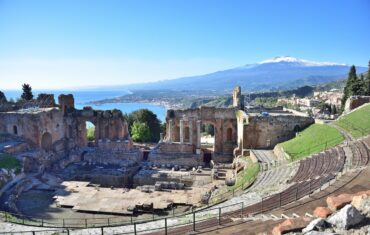When dining in Italy or Greece, finding authentic local cuisine is one of the highlights of the experience. However, with popular destinations often catering to tourists, it’s easy to end up in a restaurant that’s more about convenience and catering to international tastes than offering genuine local flavors. Here are some signs that you might be at a tourist restaurant in Italy or Greece, and tips on how to find more authentic dining spots.
1. Multilingual Menus with Photos
One of the most obvious signs of a tourist restaurant is a menu available in multiple languages and filled with pictures of the dishes. While a multilingual menu isn’t always a bad sign, especially in tourist-heavy areas, authentic local eateries usually have menus in the local language, with perhaps an English version for non-native speakers. If the menu is full of glossy photos and available in several languages (English, French, German, etc.), it’s likely tailored for tourists.
2. Staff Soliciting Diners
In tourist-heavy areas, it’s common to see staff standing outside trying to coax passersby into the restaurant. Authentic local spots typically don’t need to lure customers in this way; they rely on their reputation and the quality of their food. If someone is overly eager to get you to come inside, it might be a sign that the restaurant is more focused on attracting tourists than on serving great food.
3. “Tourist Menus” or Set Menus with Generic Dishes
Restaurants that offer “tourist menus” or set menus with very generic, international dishes (like spaghetti Bolognese, pizza, or Greek salad) are often catering to what they think tourists expect, rather than offering the best of local cuisine. These menus might be cheaper, but they often lack the quality and authenticity you’d find in places where locals dine. For example, Greek salads do not have lettuce, but a bed of tomatoes! Spaghetti and meatballs as a dish is not a thing found in Italy. You may order either separately, but not together.
4. Central Locations with High Foot Traffic
Restaurants located directly next to major tourist attractions (like the Colosseum in Rome or the Acropolis in Athens) are often geared towards tourists. While there are exceptions, these eateries can be overpriced and focused more on convenience than culinary quality. For a more authentic experience, it’s often worth walking a few blocks away from the main sights to find where the locals eat.
5. Absence of Locals
One of the clearest indicators that you’re in a tourist restaurant is the lack of local customers. Authentic eateries tend to be frequented by locals who know where to find the best food. If everyone around you is speaking English or another foreign language, it’s a good sign you might not be in a spot favored by locals.
6. Menu Variety That’s Too Broad
If a restaurant offers a wide range of dishes from different cuisines (like Italian, Greek, American, and Chinese all on one menu), it’s likely trying to cater to tourists rather than focusing on authentic local cuisine. In Italy and Greece, traditional restaurants usually specialize in regional dishes and have a more focused menu that reflects local culinary traditions.
7. High Prices Without the Quality to Match
Tourist restaurants often charge higher prices because they’re located in prime spots and target visitors who might not know the local dining scene. If you’re paying a premium price but the food doesn’t seem to match the cost—lacking in flavor, freshness, or authenticity—it’s a sign you’re probably in a tourist trap.
8. Overly Fast Service
In many parts of Italy and Greece, meals are meant to be leisurely and enjoyed at a relaxed pace. If you find that your food arrives unusually fast after ordering, it might be a sign that the restaurant is more focused on turning tables quickly rather than providing a quality dining experience.
How to Find Authentic Restaurants
- Ask Locals: One of the best ways to find authentic dining spots is to ask locals for recommendations. Whether it’s your hotel staff, a shopkeeper, or someone you meet along the way, locals can point you to the best hidden gems.
- Look for Smaller, Family-Run Establishments: Family-owned restaurants are often where you’ll find the most authentic and delicious food. These places typically have a smaller menu with dishes that reflect local traditions and are made with care.
- Venture Off the Beaten Path: Walk away from the main tourist areas and explore side streets and neighborhoods that aren’t on the typical tourist map. These areas are more likely to have authentic restaurants where locals eat.
- Check Online Reviews with Caution: While online reviews can be helpful, be cautious of those that are overwhelmingly from tourists. Look for reviews from locals or websites that cater to local audiences for more reliable recommendations.
- Observe the Crowd: If you see a restaurant bustling with locals, it’s usually a good sign that the food is authentic and worth trying.
By being aware of these signs, you can avoid tourist traps and enjoy the rich, authentic flavors that Italy and Greece have to offer. Happy dining!









